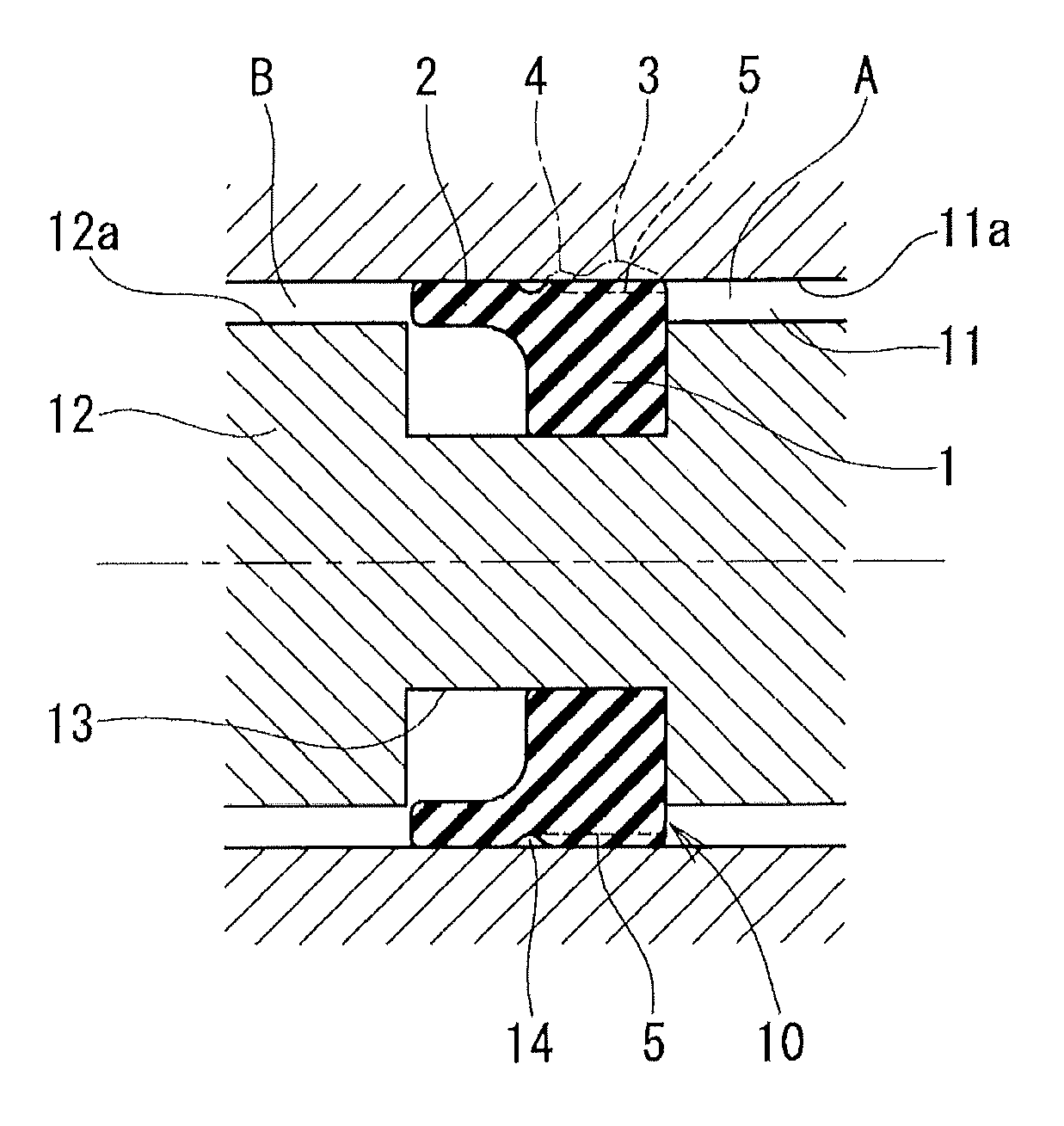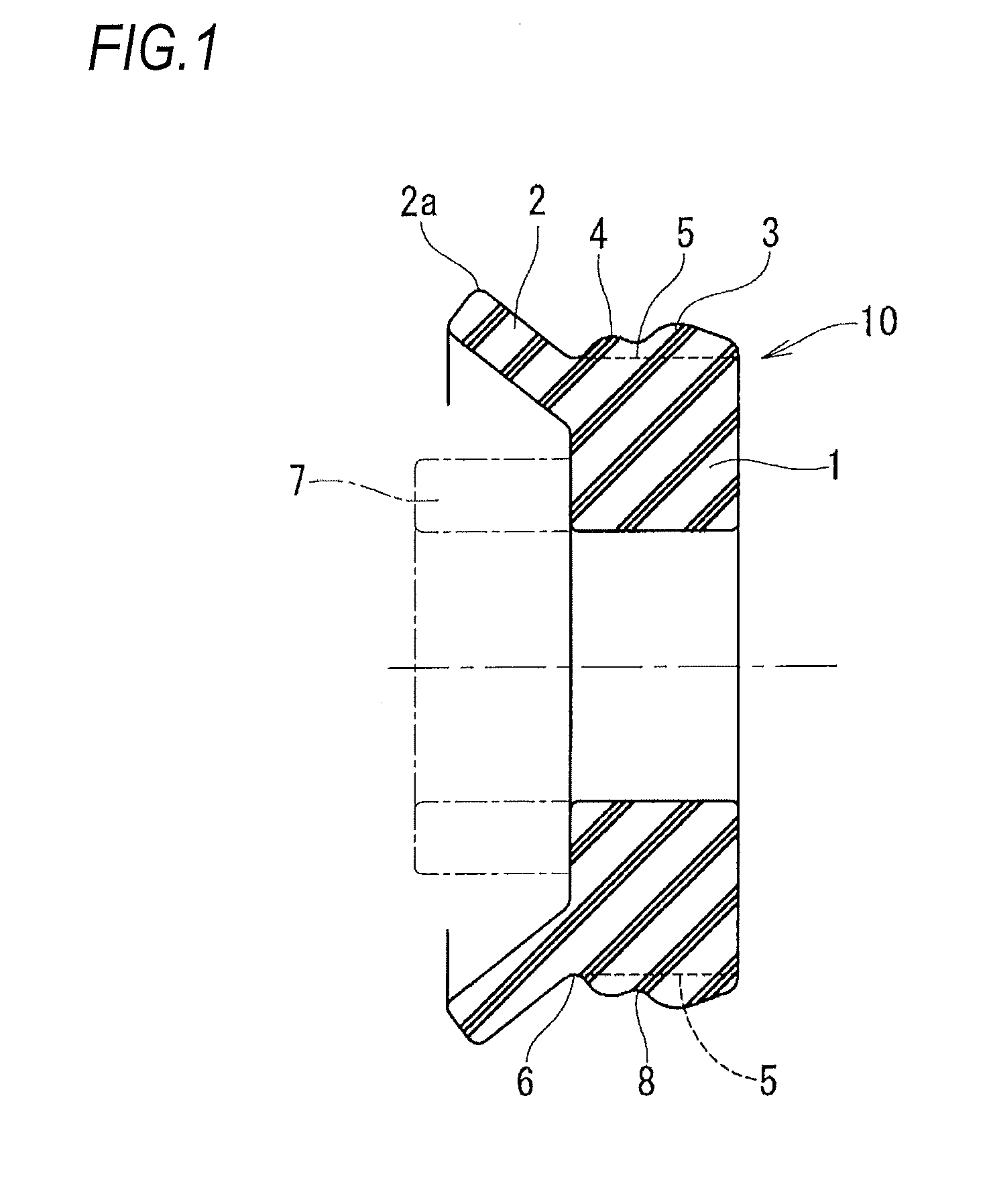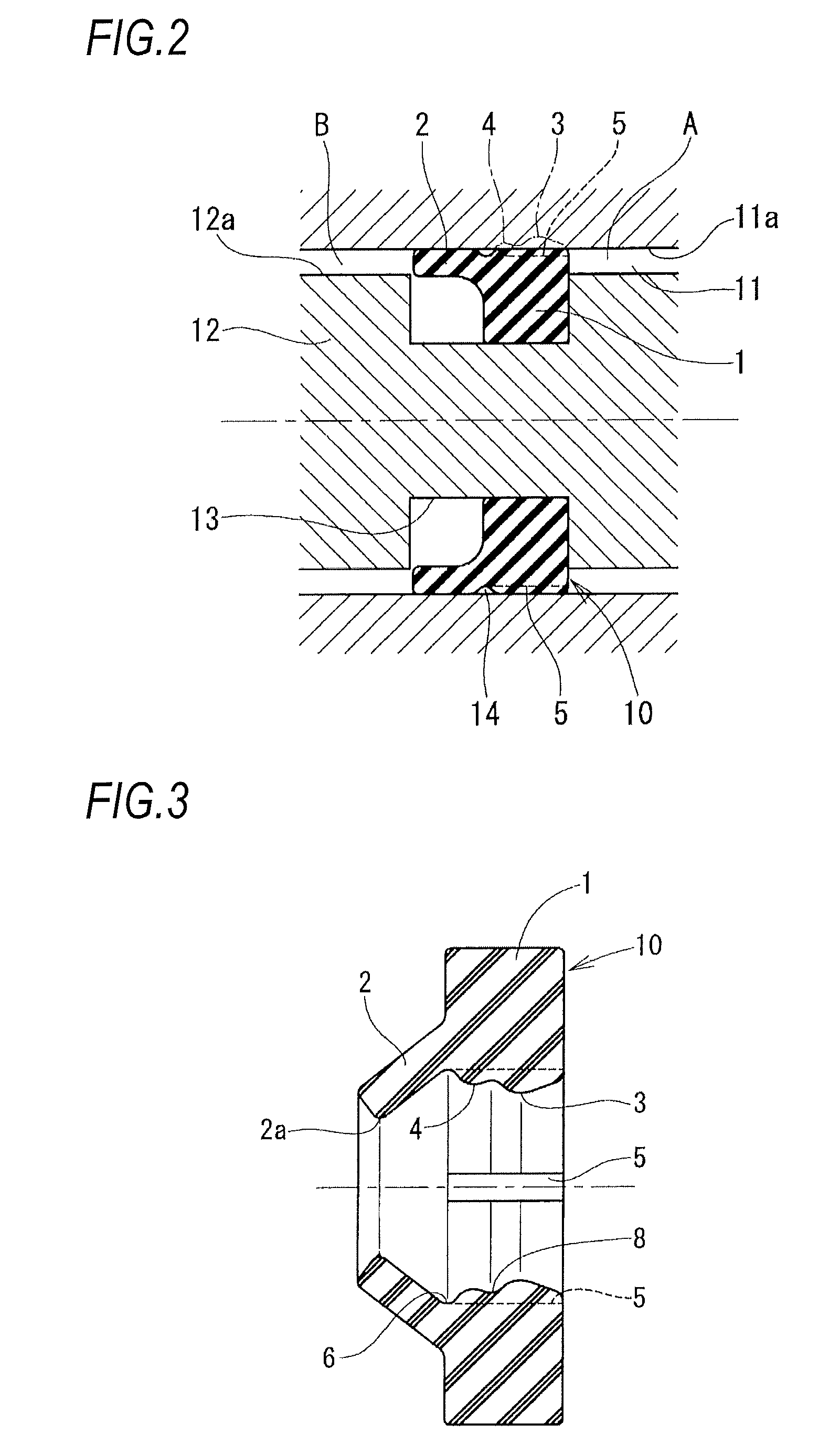Annular seal member
a technology of annule and seal, which is applied in the direction of brake systems, machines/engines, transportation and packaging, etc., can solve the problems of deteriorating reliability of seals, affecting the sealing effect, and preventing the sealing path from being obstructed, so as to achieve more stable sealing, improve the stability of the pressure release function, and secure the effect of the pressure introduction spa
- Summary
- Abstract
- Description
- Claims
- Application Information
AI Technical Summary
Benefits of technology
Problems solved by technology
Method used
Image
Examples
Embodiment Construction
[0037]Hereinafter, illustrative embodiments of an annular seal member of this disclosure will be described with reference to FIGS. 1 to 10. An annular seal member 10 of a first illustrative embodiment shown in FIG. 1 has an annular base part 1, an annular lip 2 that axially extends from one end of the base part, a first convex part 3, a second convex part 4, a plurality of passage recesses 5 and a concave part 6. A rubber having hardness of 70 to 80 IRHD is used as the material.
[0038]The base part 1 of the annular seal member is inserted into a seal recess, which is formed at any one side of a shaft hole (which will be described later) and a shaft to be inserted into the shaft hole, so that it is arranged between a hole face of the shaft hole and an outer periphery of the shaft.
[0039]The annular lip 2, which is referred to as an outer periphery lip, obliquely extends from an one end of outer periphery of the base part 1 in an axial and diametrically outer direction and has a lip edg...
PUM
 Login to View More
Login to View More Abstract
Description
Claims
Application Information
 Login to View More
Login to View More - R&D
- Intellectual Property
- Life Sciences
- Materials
- Tech Scout
- Unparalleled Data Quality
- Higher Quality Content
- 60% Fewer Hallucinations
Browse by: Latest US Patents, China's latest patents, Technical Efficacy Thesaurus, Application Domain, Technology Topic, Popular Technical Reports.
© 2025 PatSnap. All rights reserved.Legal|Privacy policy|Modern Slavery Act Transparency Statement|Sitemap|About US| Contact US: help@patsnap.com



